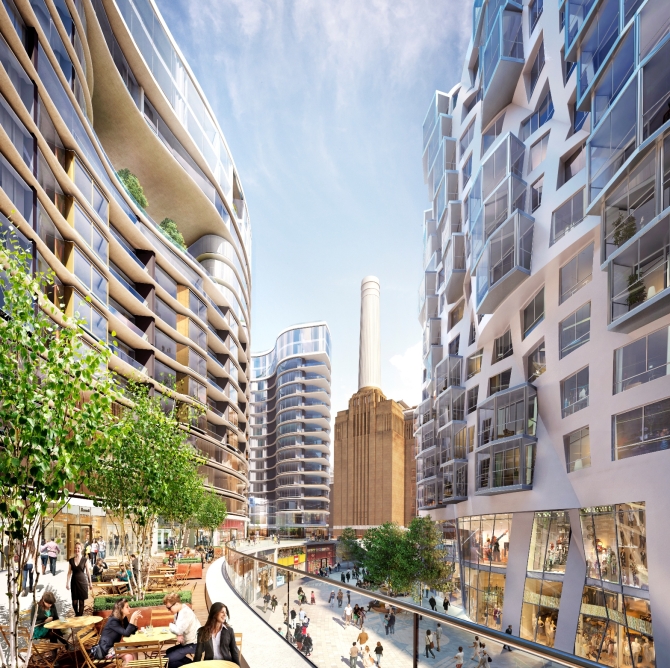World renowned architect Frank Gehry has been chosen to design the third phase of the Battersea Power Station development. Gehry, whose best known building is the Guggenheim Museum in the Spanish city of Bilbao, will work alongside Lord Foster on what will be his first project in the UK.

Gehry’s style is instantly recognisable and sometimes controversial. His titanium clad Guggenheim was widely credited with transforming the run down, post-industrial Basque city into a vibrant location. In this sense, it was the forerunner of a number of regional museums which have sought to emulate Gehry’s achievement, often without success, since the turn of the century.
The third phase of the Battersea development, involves a pedestrianised shopping area known as the High Street, which will link the power station to the proposed Northern Line extension. It will include a 200 room hotel, restaurants and additional leisure space alongside two residential zones.
Gehry says that his plans include a large scale sculptural form – which he describes as a flower – that will become an iconic feature of the project alongside the power station itself.
“I love the power station. Every time I came to London I kept asking ‘what are they going to do with that?’ It’s so well positioned it was inevitable that something would happen,” he told the FT from his Santa Monica office.
Gehry and Lord Foster will be working to a master plan drawn up by Uruguayan architect Rafael Viñoly, whose ‘Walkie Talkie’ building in the City hit the headlines recently when sunlight reflected from the glass exterior began to melt cars parked in the street below.
Battersea power Station closed in 1983 and has been the subject of several development proposals over the intervening years. These include plans for a theme park and a bid by Chelsea Football Club to build a new stadium on the site. The current project is backed by a consortium of Malaysian investors who have pledged £1 billion to complete the mixed use scheme.
During last month’s Open House weekend, an estimated 40,000 people queued along the Thames and through Battersea Park for a final chance to visit the building before construction begins.
Previous Post
Personalised Price Tags Coming to the High Street